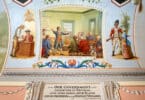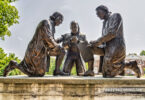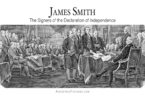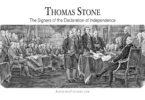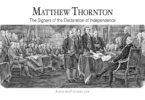George Taylor was born in 1716 in Ireland and immigrated to America when he was twenty years old, settling in Philadelphia. Little is known about his early life before coming to the American colonies. Early 19th-century biographies of the men who signed the Declaration of Independence state that he was the son of a Protestant clergyman. George paid for his passage to the American colonies by indenturing himself to Samuel Savage, Jr., who was an ironmaster at the Warwick Furnace and Coventry Forge.
George initially started at the forge as a laborer. Still, accounts of George’s early life in America state that George was promoted to bookkeeper when Samuel Savage discovered that George had a higher-than-typical level of education from his childhood in Ireland. Samuel Savage crossed to the other side in 1742, and George married his widow that same year.
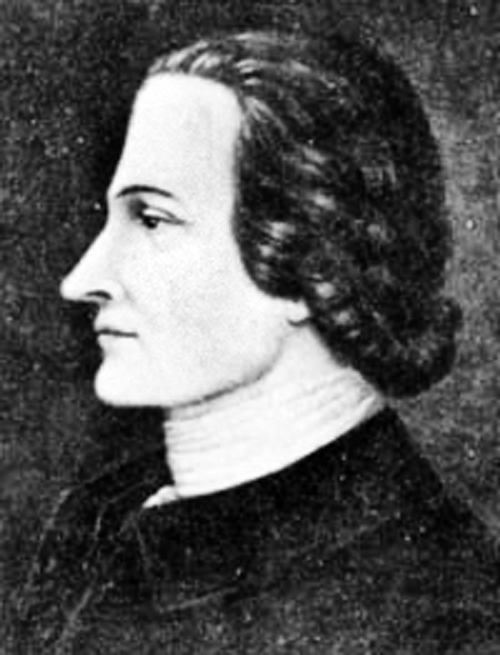
The widow, George’s boss’s widow, was named Ann Taylor Savage (though her maiden name was Taylor, she does not appear to have any relation to George, at least not a close relation). George continued to manage the ironworks for the next decade until Ann’s son with the late Samuel, named Samuel Savage III (and George’s step-son), became of legal age. At that point, he took over the ownership and management of the ironworks under the terms of his late father’s will.
This ironworks was built in 1727 by some of the wealthiest and most influential men in Pennsylvania. George and Ann lived at the ironworks until 1755, when George made a partnership to lease the Durham Furnace in Upper Bucks County, Pennsylvania. Shortly after becoming the ironmaster of this prestigious ironworks, George entered public life in Pennsylvania for the first time. George became Justice of the Peace in Bucks County from 1757 to 1763.
After the lease on the Durham ironworks expired, George and his family moved to Easton, which was the county seat of Northampton County. He purchased the Bachmann’s Tavern, which was later called the Easton House. The year after purchasing the tavern, he was commissioned to be a justice of the peace in Northampton County and was also elected to the Pennsylvania Provincial Assembly.

While serving on the Assembly, George bought three hundred thirty-one acres of land near Allentown at Biery’s Port, which is now part of the borough of Catasauqua. George employed tradesmen from Philadelphia to build a two-story Georgian stone mansion for him there, overlooking the Lehigh River on a bluff. The house was completed in 1768, and Ann crossed to the other side shortly thereafter. George lived in the house until 1776 when he moved back to Durham. Today, the house is called the George Taylor House and is on the National Historic Landmark list.
George’s ironworks at Durham, which he released, was the first to supply cannon shot to the Continental Army during the American Revolution. In 1776, the Second Continental Congress voted on independence on July 2 and adopted the Declaration of Independence on July 4. Five days before the July 2 vote for independence, Pennsylvania forced five of its delegates, who were all loyalists to the crown, to resign from the Congress. George was one of the replacements appointed to the Congress by the Assembly on July 20, 1776.

One of George’s first tasks as a member of the Continental Congress was to sign the Declaration of Independence. Of all fifty-six signers, George was one of only eight who were born outside of the colonies, the only one who had been an indentured servant, and the only one who was an ironmaster.
The Assembly appointed a new Pennsylvania delegation to the Congress in February of 1777, and George was not among those re-appointed. Instead, in March of 1777, he was appointed to Pennsylvania’s Supreme Executive Council. George attended all of the meetings of the council, which was formed to govern Pennsylvania under its new constitution, until April of 1777, when he became ill and was bedridden for more than a month. After George recovered, he retired and announced that he was ending his public career.
George kept on making cannon shot and shells at the Durham Furnace during the war, supplying the Continental Army and Navy. Eventually, he moved back to Easton, Pennsylvania, in 1780, as his health was not as good as it used to be. George crossed to the other side there in 1781 at the age of sixty-five years old.
George was buried at St. John’s Lutheran Church Cemetery, which was across from his house in Easton. The house he was leasing at the time of his crossing is now known as the Parsons-Taylor House. It is the oldest house still standing in the city. Later, in 1870, the church property was sold to be used for the construction of a public school. The occupants of the cemetery were moved, including George, who was moved to the Easton Cemetery. He is still there, buried in front of a monument local residents there erected to honor him.
George and his wife, Ann, had two children together. These were a daughter named Ann and called Nancy, who crossed to the other side while still a child, and a son named James. James became a lawyer, married Elizabeth Gordon, and had five children with her. In his will, George left five hundred pounds to his eldest grandchild, also named George, as well as five hundred pounds to his housekeeper, Naomi Smith, “in consideration of her great care & attendance on me for a number of years.” George also stipulated in his will that the rest of his estate was to be divided equally between his five grandchildren by his son James and the five children he fathered with Naomi Smith after his wife Ann crossed to the other side. These children were Sarah, Rebecca, Naomi, Elizabeth, and Edward. These bequests were apparently never fulfilled due to financial difficulties on his estate.

